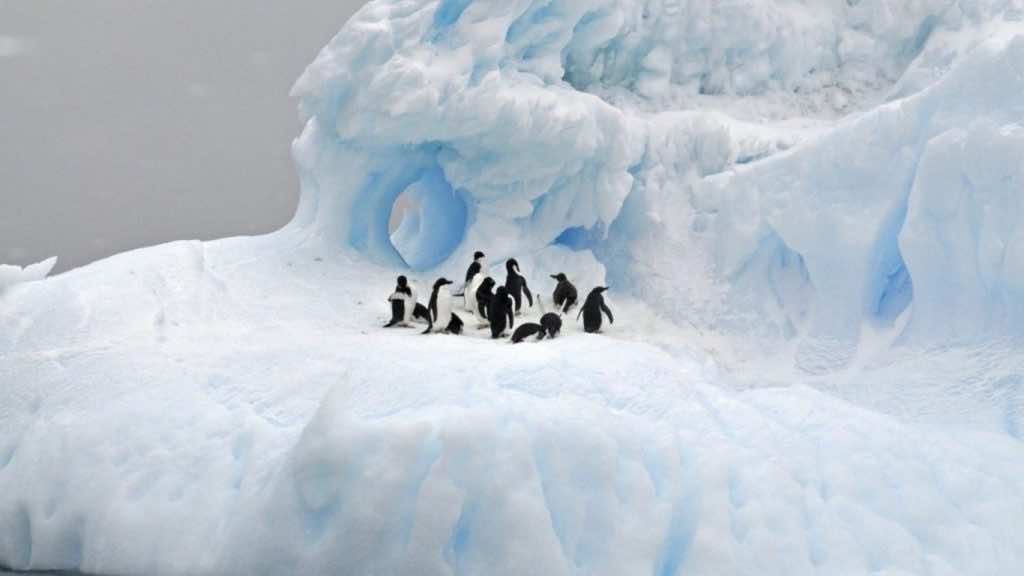Both the North Pole and the South Pole are cold because they do not get any direct light from the sun.
Still, the South Pole remains quite colder than the North Pole, according to the Woods Hole Oceanographic Institution. The annual average temperature at the North Pole is minus 40 degrees Fahrenheit (minus 40 degrees Celsius) in winter and 32 F (0 C) in summer. In contrast, the South Pole’s averages are far frostier, with an annual average temperature of minus 76 F (minus 60 C) in winter and minus 18 F (minus 28.2 C) in summer.
The reason for this disparity is that “The North Pole is an ocean, and the South Pole is a continent,” Robin Bell, a polar scientist at Columbia University’s Lamont-Doherty Earth Observatory in New York, told Live Science.
The Arctic is an ocean surrounded by land. The Antarctic is land surrounded by the ocean. Water cools and warms more slowly than land, resulting in fewer extremes of temperature.
Most of this variation in ice cover at both the North and South Poles is due to sea ice that floats, grows, and melts over the ocean. The Arctic is almost entirely surrounded by land, the sea ice that forms there is not as mobile as the sea ice in the Antarctic.
On average, Arctic Sea ice reaches a minimum extent of about 2.5 million square miles (6.5 million square km) and a maximum extent of 6 million square miles (15.6 million square km), the NSIDC said. In comparison, on average, Antarctic Sea ice has a smaller minimum extent of 1.2 million square miles (3.1 million square km) and a larger maximum extent of 7.2 million square miles (18.8 million square km).
The South Pole has more total ice than the North Pole. This is because the South Pole has land ice in addition to its sea ice — the ice sheet on Antarctica is up to 3 miles (4.8 km) thick and covers about 5.3 million square miles (13.7 million square km), about the area of the contiguous United States and Mexico(opens in new tab) combined, according to the National Science Foundation. Antarctica holds about 90% of all the world’s ice.
“The volume and mass of ice on the land changes little in the summer as a fraction of the amount in winter because the volume and mass are so large,” said Cecilia Bitz, a polar climate scientist at the University of Washington in Seattle.

